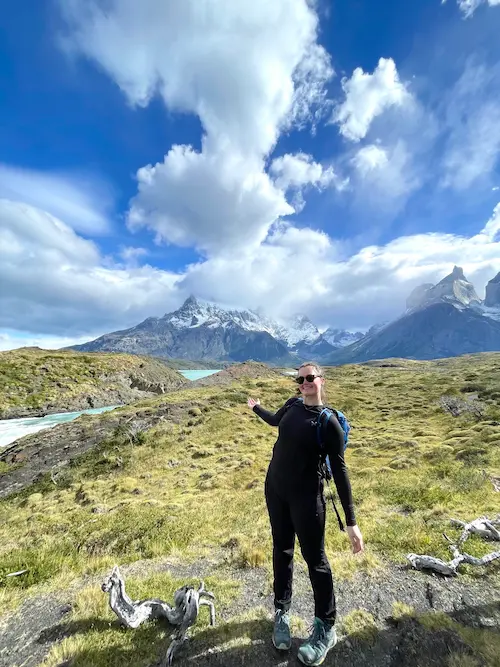Exploring away from Big South
Bright and early on October 15th, twenty-three students, twelve staff members, and our three center dogs descended on the South Caicos fishing harbor. We were eagerly awaiting the ferry to North Caicos and giving the dogs some affectionate goodbyes, when we were hit with a brief rain shower. As we huddled under a tiny shelter, fishermen watching us, dogs eating old fish scraps off the docks, we began to hope this wasn’t a bad omen for our field trip over the next three days. Minutes later a beautiful double rainbow replaced the rain shower, and we knew it was going to be a great trip. Over the next three days we would visit three of the Caicos islands and learn about the rich cultural and natural history of the TCI. Each island was quite unique, and posed a distinct contrast to our home base on South.

Double rainbow over Cockburn Harbor, South Caicos; photo courtesy of Paul Simonin
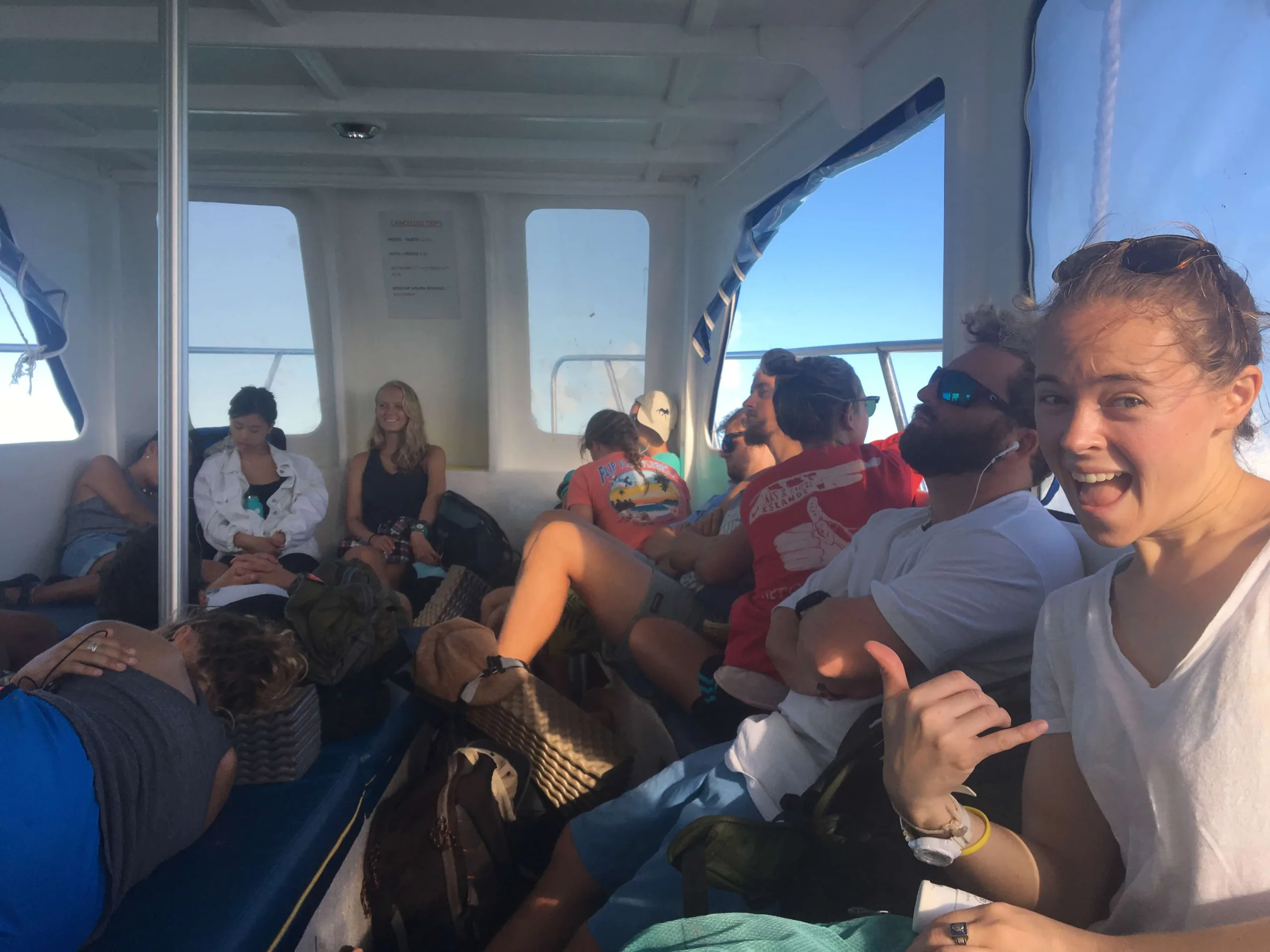
The 1.5 hour ferry ride to North Caicos allowed for some students and staff to catch up on sleep. Katie, our SAM, was super stoked for the start of the field trip
Once we arrived at Sandy Point Marina on North we boarded our chariot, an old school bus, which would take us around the islands of North and Middle Caicos that day. Our first stop was the community of Kew (‘the garden of the Turks and Caicos’), where we met up with our amazingly knowledgeable tour guide, Bryan ‘Naqqi’ Manco. Naqqi is the Caicos Pine Recovery Project Manager with the TCI Department of Environmental and Coastal Resources and has a wealth of knowledge on all things TCI.
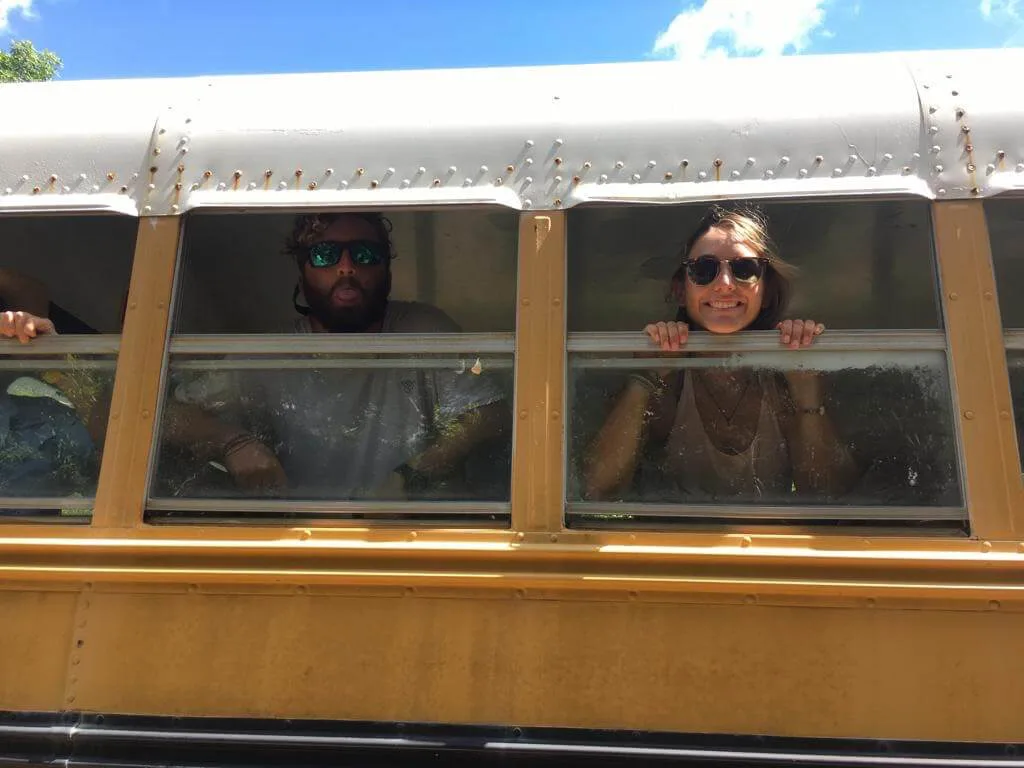
Our transportation on North and Middle; photo courtesy of Katie Carr
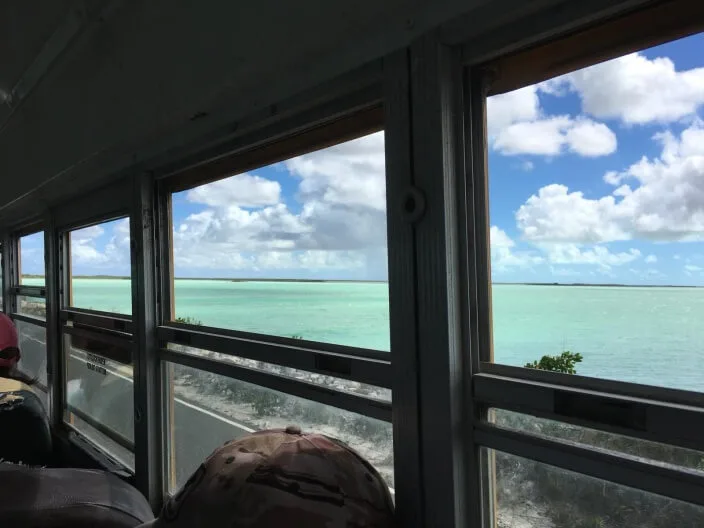
Photo courtesy of Paul Simonin
Next, we headed to Wade’s Green, an old cotton plantation settled by Florida loyalist Wade Stubbs. From the late 1700s until 1830, the plantation was the center of agricultural and economic activity on North Caicos, and housed hundreds of slaves. Of particular note was the graffiti on the interior wall of the old kitchen building, believed to be left as a goodbye ‘notice’ by slaves who escaped the plantation and left for Haiti where they would receive their freedom.
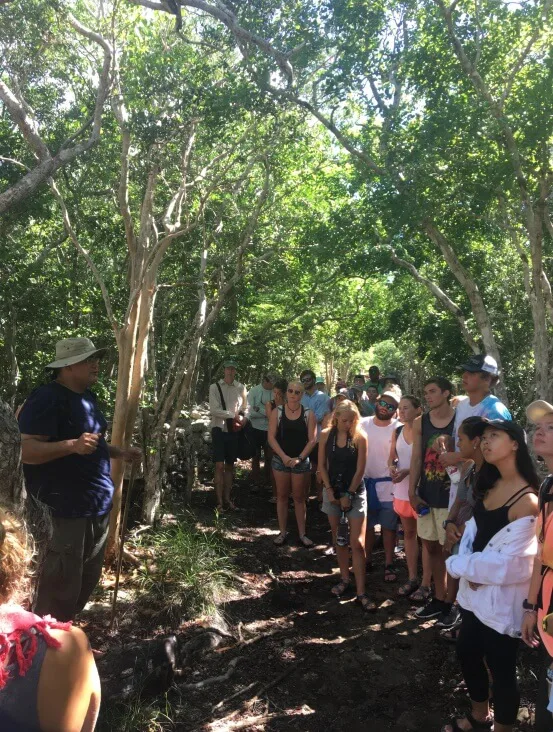
Naqqi leading the group around Wade’s Green
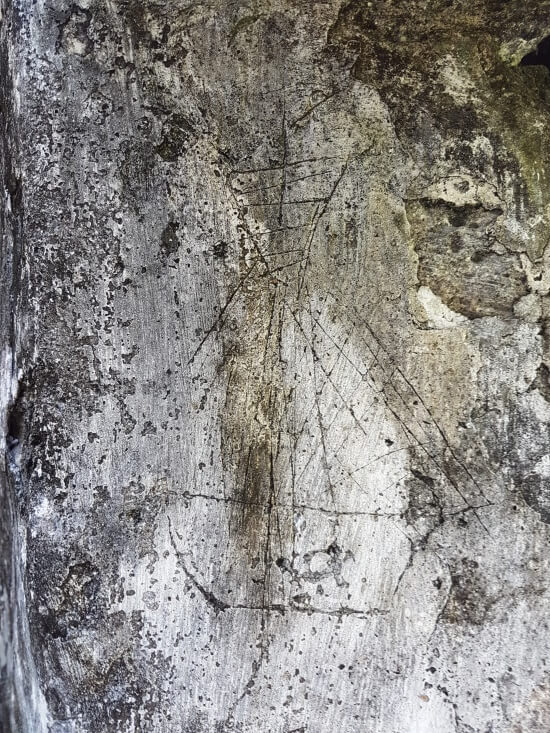
Picture of a boat inscribed in the wall by escaping slaves
As we were touring the grounds, Naqqi spotted a Caicos Island Pigmy Boa, a species found only on the Turks and Caicos Islands, and likely the smallest boa constrictor in the world. He also educated us about the large termite nests, coffee berries that will give you hallucinations if you eat too many, cultural trends such as the importation of fake China (dishware), among a host of other incredibly interesting facts about the natural and cultural history of North Caicos.
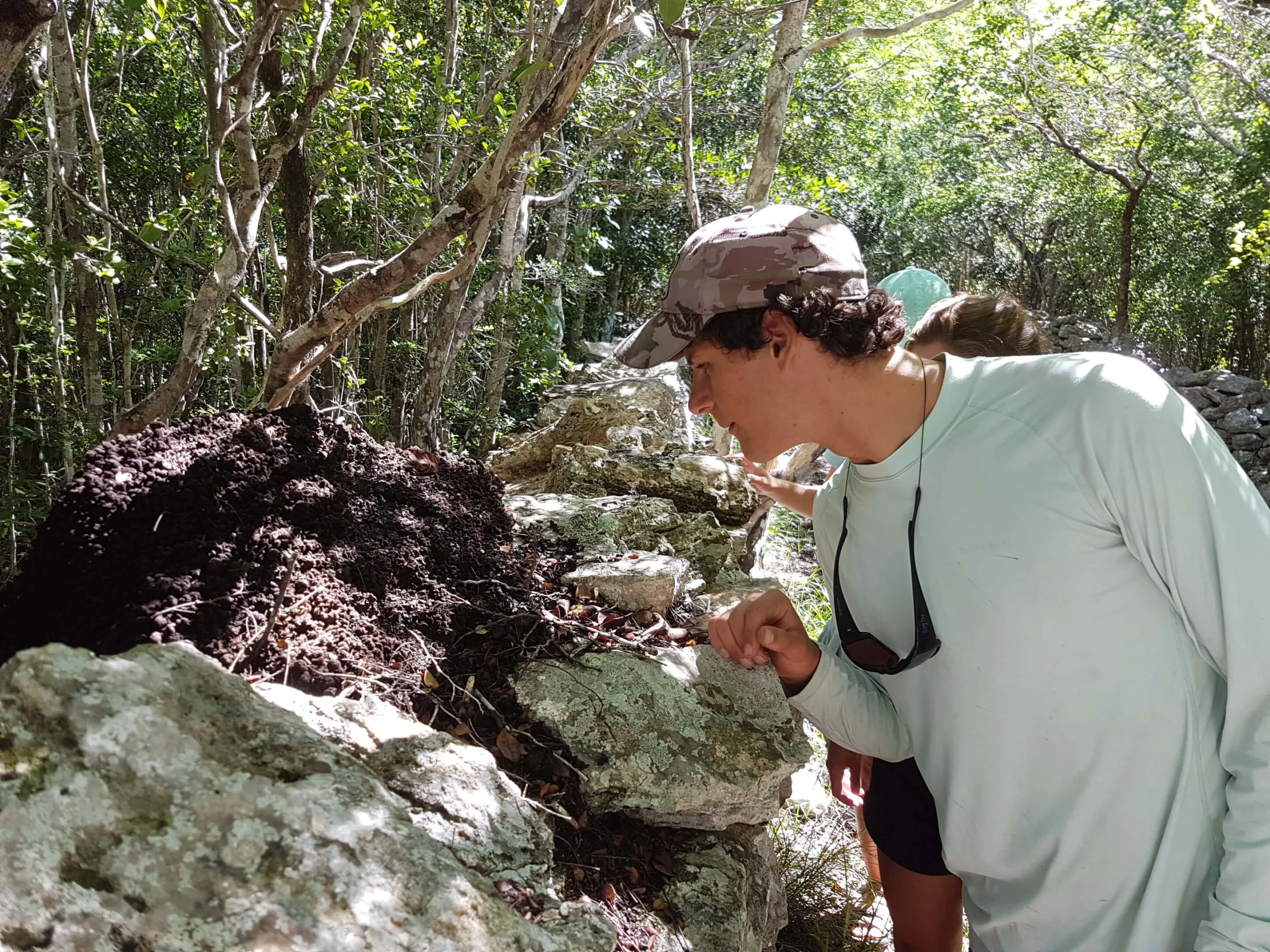
Checking out the termite mound; photo courtesy of Heidi Hertler
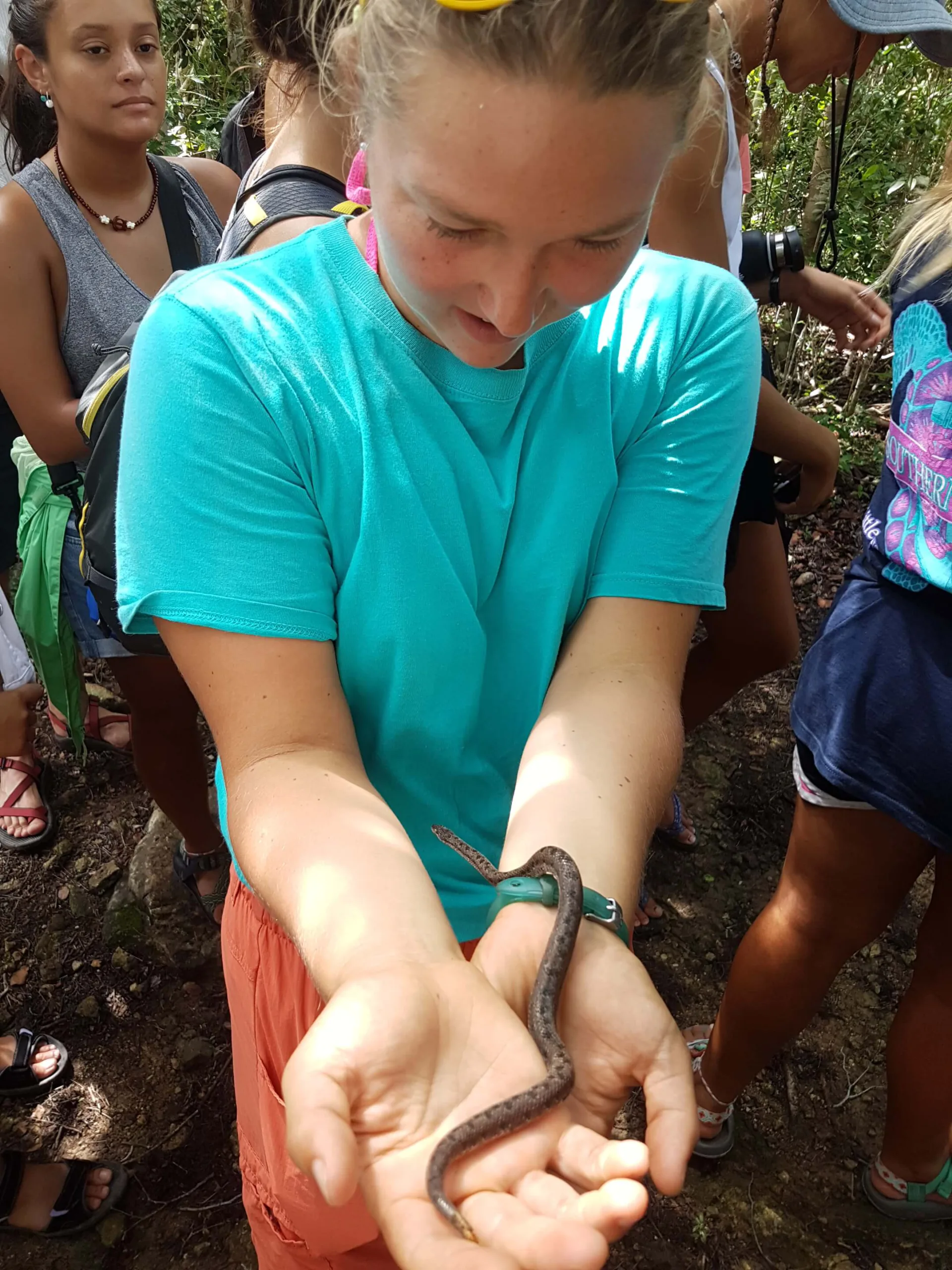
Handling a pregnant pigmy boa; photo courtesy of Heidi Hertler
After Wade’s Green, we traveled to Middle Caicos to enjoy a picnic lunch at Mudjin Harbour. Limestone cliffs, open-faced caves, pocket beaches, crashing waves, and beautiful turquoise water make this beach location extra special. We were able to get in for a quick dip, and then it was off to the Conch Bar Caves to explore one of the largest cave systems in the Caribbean region.
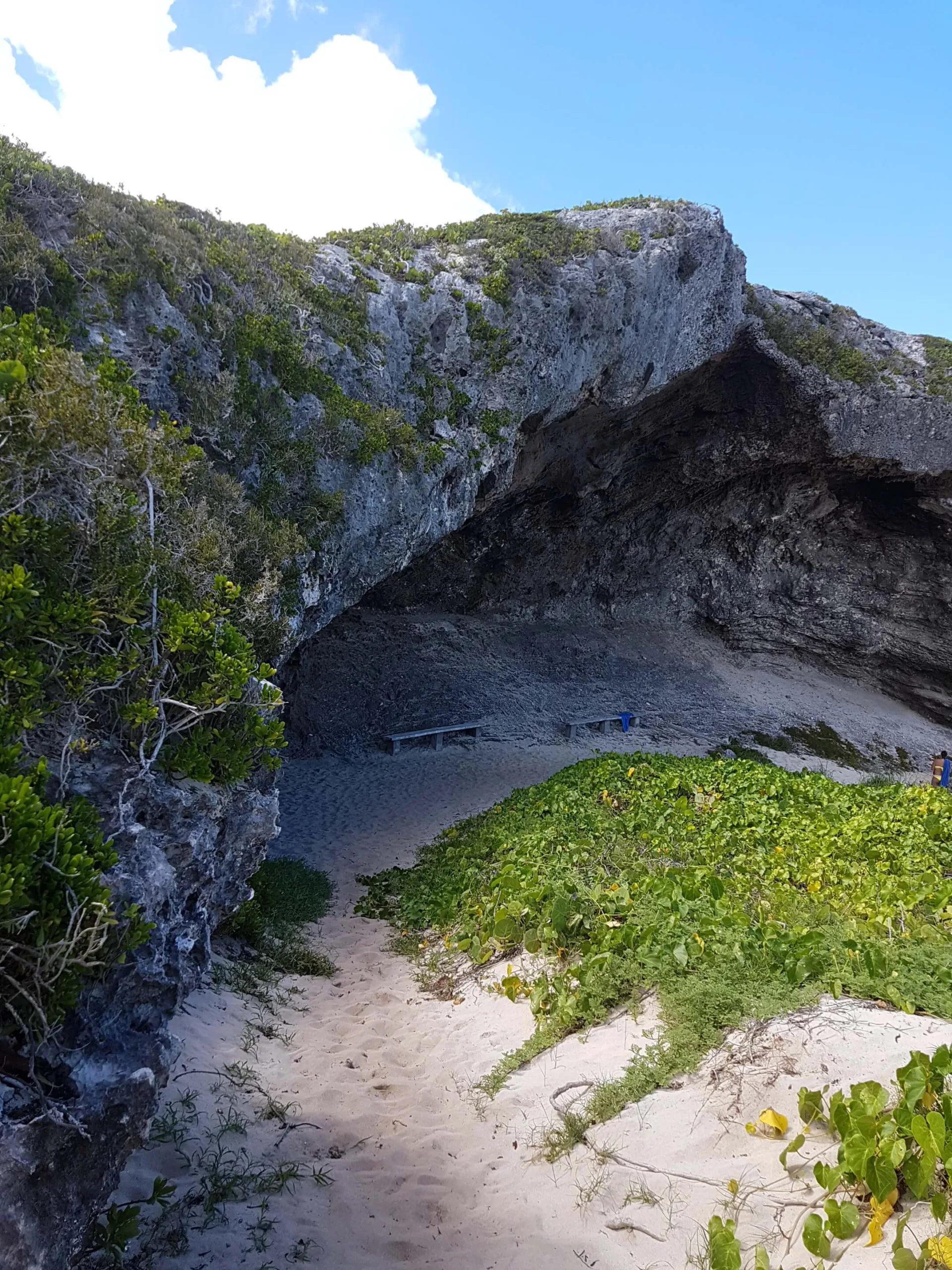
Open faced cave; photo courtesy of Heidi Hertler

Students swimming at Mudjin Harbor
At the Conch Bar Caves, Naqqi showed us some intriguing stalactite and stalagmite formations, endemic shrimp found in the ponds inside the cave, and four species of bats – buffy flower bat, Redman’s long-tongued bat, Cuban fruit bat, and the Waterhouse’s big eared bat. Given the large number of bat residents in the caves, guano mining became a significant economic activity in Middle Caicos starting in the 1880s. You can still see traces of the miners’ presence in the caves today, with graffiti and char from fires decorating the cave walls and ceilings. We also learned that indigenous peoples of the past were afraid of these caves, but utilized them for shelter during hurricanes.
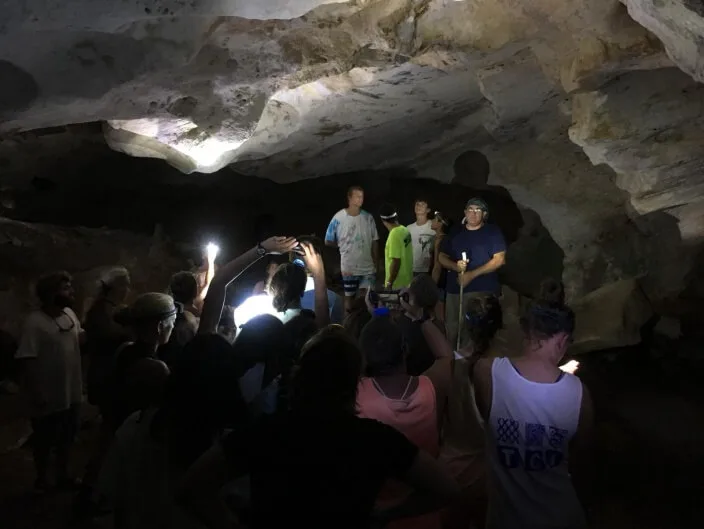
In the depth of the caves we had to use headlamps for light; photo courtesy of Paul Simonin
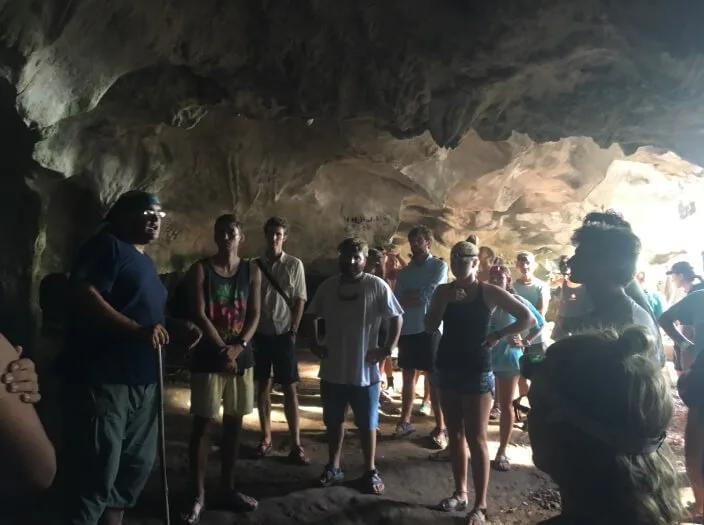
Naqqi with the group at the entrance to the caves
Following our adventures on Middle and North, we went back to the Kew Community Center, which the welcoming people of Kew graciously allowed us to use as our accommodation for the night. After dinner, Naqqi hosted us in his backyard for a bonfire, and Katie provided us with the fixings for some s’mores. The next morning we headed back to the marina to await our ferry from North to Providenciales (Provo), the most populous island in the TCI.
Once on Provo, we headed to our hotel, Ports of Call, for a picnic lunch by the pool, and then headed off in groups to survey tourists. Students had developed a survey in class prior to our field trip to answer several research questions. After three hours of surveying tourists in shopping centers and on the beach at Grace Bay, the students completed 85 surveys. Over the past thirty years, Provo has become heavily developed for tourism; however the students were surprised at the small numbers of tourists they encountered while surveying. One theory is that the steady stream of tourists that usually flock to Provo has decreased ever since the major hurricanes of last year.
After conducting surveys, the group had an hour to relax before heading across the street for a presentation on TCI culture from David Bowen, the former Director of Culture for the TCI. Mr. Bowen is a talented educator, as well as a talented entertainer. He demonstrated many different styles of TCI music and instruments such as the harmonica, accordion, tambourine, as well as the saw which is used in the ‘rake and scrape’ music that originates from the TCI. Mr. Bowen also described for us the national dress of the TCI, explaining the unique features and dedicated colors of each island. We finished the day with pizza from a local restaurant, followed by ice cream outings and swimming in the hotel pool. The next morning we headed to Provo Primary School for community outreach, teaching the young students about topics such as dolphin echolocation, mangroves, traditional TCI dance, and weaving. All in all, it was an exciting educational adventure, filled with amazing people and amazing places.

Selfies with the group; photo courtesy of David Bowen

Doing activities with the students at Provo Primary; photo courtesy of Heidi Hertler
Related Posts


